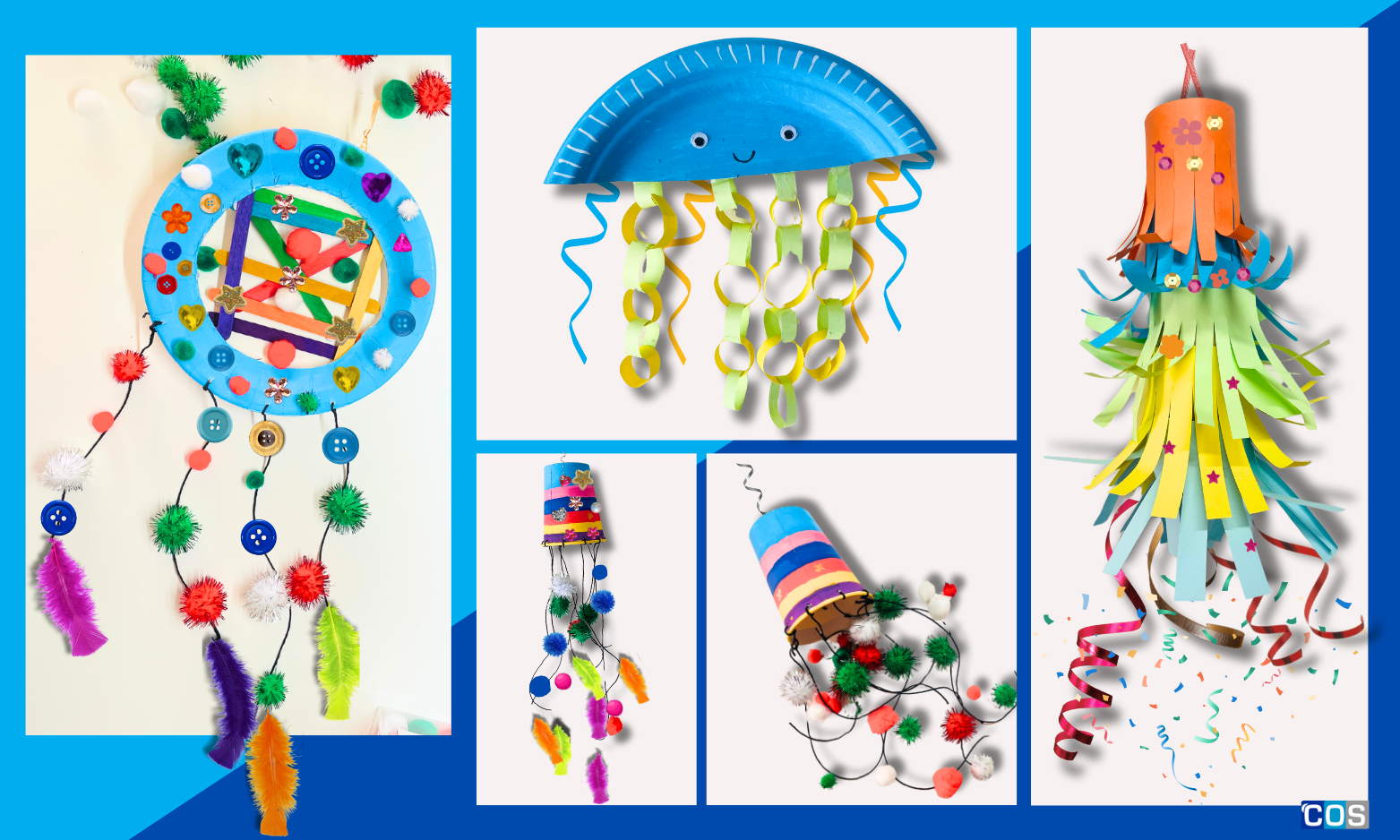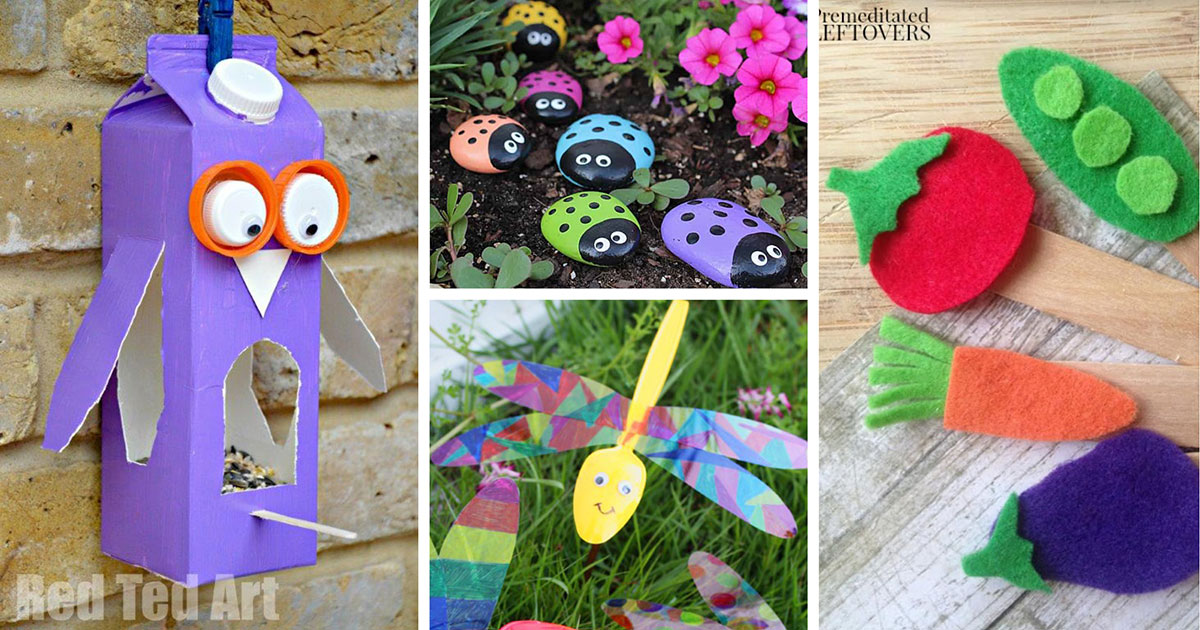DIY Projects to Do at Home for Kids: Unleash your inner child (and your kids’ inner geniuses!) with this whirlwind tour of awesome at-home activities. Forget screens – we’re diving headfirst into a crafting, cooking, and creating extravaganza that’s as educational as it is entertaining. Get ready for giggling fits, messy masterpieces, and memories that will last longer than that glitter glue stain on the carpet (we won’t judge!).
From age-appropriate crafts that’ll keep even the littlest hands busy to science experiments that’ll blow their minds (and maybe yours too!), we’ve got a project for every kid, every skill level, and every available scrap of cardboard. We’ll explore eco-friendly crafting with recycled materials, whip up some delicious treats in the kitchen, and build epic structures that would make even the most seasoned architect jealous.
So grab your glue guns, your glitter, and your boundless enthusiasm – let’s get crafting!
DIY Projects for Kids: Unleashing Creativity at Home: Diy Projects To Do At Home For Kids

Get ready for some seriously fun family time! This guide is packed with DIY projects perfect for kids of all ages, from toddlers to tweens. We’ll explore crafting with recycled materials, easy science experiments, delicious cooking adventures, creative building challenges, and even a little gardening. Get your glue guns, glitter, and gardening gloves ready – let’s get crafting!
Age-Appropriate DIY Projects
Choosing the right project depends on your child’s age and abilities. Safety is paramount, so always supervise younger children closely and adjust project complexity accordingly.
| Age Group | Project Idea | Materials Needed | Summary |
|---|---|---|---|
| Toddlers (1-3 years) | Simple Sensory Bin | Container, dried beans/pasta, scoops, cups | Fill a container with dried beans or pasta. Let toddlers explore textures and use scoops and cups for pouring and transferring. Supervise closely to prevent choking hazards. |
| Preschoolers (3-5 years) | Handprint Art | Paper, paint, glitter | Dip little hands in paint and create colourful handprints on paper. Add glitter for extra sparkle. Focus on the process, not perfection! |
| Elementary School (6-12 years) | DIY Bird Feeder | Pine cone, peanut butter, birdseed | Roll a pine cone in peanut butter and then in birdseed. Hang it outside to attract feathered friends. Learn about different bird species and their diets. |
| Tweens (10-12 years) | Tie-Dye T-Shirt | Plain white t-shirt, tie-dye kit | Follow the instructions on the tie-dye kit to create a unique and colourful t-shirt. Experiment with different patterns and colours. |
Safety Precautions: Always supervise young children, especially with sharp objects, hot glue guns, or potentially hazardous materials. Choose non-toxic paints and crafting supplies. Explain the importance of handwashing before and after projects.
Crafting with Recycled Materials

Repurposing everyday items into creative crafts is both fun and eco-friendly! It teaches kids about resourcefulness and reduces waste.
- Cardboard Box City: Transform cardboard boxes into houses, cars, or even a whole city! Use paint, markers, and recycled materials for decoration.
- Plastic Bottle Planters: Cut plastic bottles in half and use them as small planters for herbs or flowers. Decorate them with paint or markers.
- Egg Carton Creatures: Use egg cartons to create adorable animals or insects. Cut, paint, and glue them together to bring your creations to life.
- Newspaper Beads: Roll up strips of newspaper and glue them together to form beads. String them together to make necklaces or bracelets.
- Toilet Paper Roll Crafts: Toilet paper rolls can become anything from binoculars to robots! Let your imagination run wild.
Environmental Benefits: Using recycled materials reduces landfill waste, conserves natural resources, and teaches children about environmental responsibility. It’s a win-win for creativity and the planet!
Recycled Material Artwork: To create a unique artwork, collect various recycled materials like bottle caps, cardboard pieces, and fabric scraps. Arrange them on a canvas or piece of cardboard to create a mosaic or abstract design. Use glue to secure the pieces and add paint or markers for extra details.
Easy Science Experiments
Science doesn’t have to be complicated! These simple experiments will spark curiosity and teach fundamental scientific principles.
| Experiment Name | Materials | Procedure | Scientific Principle |
|---|---|---|---|
| Baking Soda Volcano | Baking soda, vinegar, dish soap, water, container | Mix baking soda and water in a container. Add dish soap. Slowly pour vinegar into the mixture. Observe the eruption! | Chemical Reaction (Acid-Base Reaction) |
| Rainbow Density Tower | Different coloured liquids (honey, corn syrup, dish soap, water, oil), tall glass | Carefully pour each liquid into the glass, starting with the densest (honey) and ending with the least dense (oil). Observe the layers. | Density |
| Floating Egg | Egg, glass, water, salt | Place an egg in a glass of water. It should sink. Add salt to the water and observe what happens. | Density and Buoyancy |
Baking Soda Volcano Step-by-Step: 1. Build a volcano shape using playdough or clay. 2. Place a smaller container inside the volcano’s crater. 3.
Mix baking soda and water in the container. 4. Add a few drops of dish soap. 5. Slowly pour vinegar into the mixture.
Watch the foamy eruption! The eruption is caused by the release of carbon dioxide gas when baking soda (a base) reacts with vinegar (an acid).
Remember to click diy kids crafts for preschoolers to understand more comprehensive aspects of the diy kids crafts for preschoolers topic.
Cooking and Baking Activities
Cooking with kids is a fantastic way to bond, teach essential life skills, and enjoy delicious treats! Always prioritize safety and hygiene.
- Fruit Salad: Choose a variety of fresh fruits (strawberries, blueberries, bananas, etc.). Wash and cut the fruits (with adult supervision). Mix them together and enjoy!
- Simple Oatmeal Cookies: Combine oatmeal, brown sugar, butter, and an egg. Roll into balls and bake until golden brown. (Adult supervision required for oven use)
- Mini Pizzas: Use English muffins or pita bread as the base. Add tomato sauce, cheese, and your favorite toppings. Bake until the cheese is melted and bubbly. (Adult supervision for oven use)
Kitchen Safety: Always supervise children in the kitchen. Teach them about the importance of handwashing, using sharp knives carefully, and avoiding hot surfaces. Let them help with age-appropriate tasks, like washing vegetables or mixing ingredients.
Measuring Ingredients: Use measuring cups and spoons appropriate for children’s size and dexterity. Show them how to level off ingredients for accurate measurements. Visual aids like charts with pictures of different measuring tools can be helpful.
Creative Building Projects, Diy projects to do at home for kids
Building projects are fantastic for developing problem-solving skills and spatial reasoning. They encourage creativity and imaginative play.
- Block Towers: Challenge kids to build the tallest or most creative tower using blocks.
- LEGO Creations: Provide LEGOs and let their imaginations run wild. They can build houses, cars, robots, or anything they can dream up.
- Cardboard Fort: Use blankets, pillows, and cardboard boxes to build a cozy fort.
- Marble Run: Create a marble run using cardboard tubes, cups, and other materials.
- Stick and Stone Structures: Go on a nature walk and collect sticks and stones to build small structures outdoors.
Benefits of Building: Building activities enhance problem-solving skills, improve spatial reasoning, boost creativity, and promote fine motor development. They also encourage collaboration and teamwork when children work together on a project.
Encouraging Creativity: Provide a variety of building materials and encourage children to experiment and explore different designs. Ask open-ended questions, like “What kind of building are you making?” or “What story does your creation tell?” Avoid imposing specific instructions or designs, letting their creativity flow freely.
Gardening for Kids
Gardening is a wonderful way to connect with nature, learn about plant life cycles, and enjoy fresh produce. Start small and choose easy-to-grow plants.
Creating a Small Garden: Start with a small herb garden or a vegetable patch in pots or a raised bed. Choose a sunny location and use well-draining soil. Help children plant seeds or seedlings, water them regularly, and watch them grow.
Suitable Plants: Easy-to-grow options include sunflowers, radishes, lettuce, beans, and herbs like basil and mint. These plants grow quickly and provide a sense of accomplishment for young gardeners.
Nurturing Plants: Explain the importance of watering plants regularly, providing sunlight, and protecting them from pests. Encourage children to observe the growth process, recording their observations in a journal or diary. This helps them develop patience, responsibility, and an appreciation for the natural world.
So there you have it – a treasure trove of DIY projects guaranteed to transform your home into a hub of creativity and fun. Remember, the most important ingredient isn’t glitter or glue, it’s the shared time and laughter created while making memories. So ditch the screens, gather your supplies, and prepare for some seriously awesome family bonding time.
Happy crafting!
FAQ Section
What if my child is too young for a particular project?
Adapt! Simplify steps, provide more assistance, and focus on the fun aspects. Safety is paramount, so always supervise younger children closely.
How can I make these projects more engaging?
Involve your child in choosing the project, let them personalize their creations, and celebrate their efforts regardless of the outcome. Make it a collaborative effort!
What if I don’t have all the materials listed?
Get creative! Substitute materials where possible. The spirit of DIY is all about resourcefulness. A little imagination goes a long way!
How do I handle messes?
Embrace the mess! It’s part of the creative process. Have a designated crafting area, use drop cloths, and remember that cleanup is a learning opportunity too.

